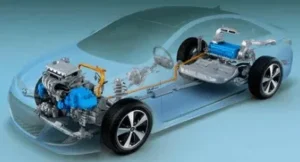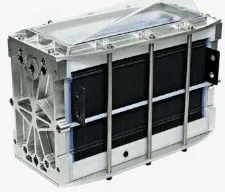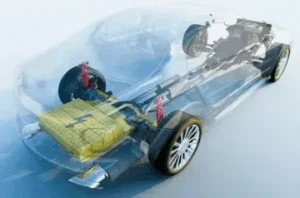Hybrid and electric cars, EV and HV.
Hybrid and electric cars, EV and HV.
Download free PDF books on EV ( electric Vehicles ) and HV ( hybrid cars )
| Electric vehicle as of June 2019 | Download ebook 2.5Mb |
| CRC hybrid cars free book | Download ebook 11.5MB |
| Hybrid and electric vehicle safety training program | Download pdf file 1MB |
| HV battery control systems | Download ebook 401KB |
| NSC Electric Vehicle Program guide | Download ebook 30.4MB |
| Technology Roadmap for Tesla Motors Sedan EV | Download ebook 1.17MB |
| A case study of tesla motor | Download pdf |
| Training for work on vehicles with high-voltage systems | Download pdf |
| Analysis of the Electric Vehicle Industry | Download pdf |
| A Comparison of Different Battery Types for Electric Vehicles | Download PDF |
| Hybrid and electric training solutions | Download PDF |
| A Guide to Electric Car | Download PDF |
| Electric vehicle setting a course for 2030 | download PDF |
| challenges and opportunities for Electric Vehicle Adoption | Download PDF |
| A review on Electric Vehicle: Technologies and Challenges | Download PDF |
| Tesla Motors case study | Download PDF |
| Fundamentals of Hybrid Cars Technology A hybrid vehicle is one that uses a combination of an internal combustion engine (ICE) and a battery-electric drive system to improve fuel economy and reduce emissions. The most common type of hybrid car combines Gasoline ICE and Electric Motor | Download PDF |
| Tesla, the battery technology behind the wheel | Download pdf |
| MIL ON With DTC P0A80/P1AC000 and/or P0A7F/P1A8000 Due to Dust or Debris in the HV Battery Cooling Fan/Filter | Download pdf 720KB |
| TOYOTA PRIUS Plug-in Hybrid Gasoline-Electric Hybrid Synergy Drive | Download pdf 2.4MB |
| Hydrogen and fuel cell solutions for transportation | Download pdf 4.3MB |
| Hybrid Vehicle Safing Procedure for NiMh Battery Quick Training Guide QT013A | Download pdf 5MB |
| A Comprehensive Study of Key Electric Vehicle (EV) Components, Technologies, Challenges, Impacts, and Future Direction of Development | Download pdf 11MO |
| Hydrogen Fuel Cell Automobiles | Download pdf 105Ko |
| HYBRID BATTERY SYSTEM | Download pdf 2.3MO |
| Fuel Cell Electric Vehicles (FCEV): Policy Advances to Enhance Commercial Success | Download pdf 234KO |
| Electric and Hybrid Cars History | PDF book 17MB |
| Electric powertrain energy systems, power electronics & drives for hybrid, electric & fuel cell vehicles | PDF book 25MB |
| GOVPUB -C13- hybrid electric | Pdf book 12MB |
| Power Train Engineering and Technology Modeling, Control, and Simulation | PDF book 51MB |
| Hybrid Electric AUTOMOTIVE final cs2 | pdf book 14MB |
| Hybrid Vehicles and the Future of Personal Transportation | PDF book 11MB |
| Electric Vehicle Technology Brief | PDF book 19MB |
| Modern Electric, Hybrid Electric, and Fuel Cell Vehicles Fundamentals, Theory, and Design, *Second Edition | PDF book 10MB |
| Build Your Own Electric Car Or Truck | PDF 02MB |
| Hybrid Vehicle Technologies | PDF 613Kb |
| LAND ROVER HYBRID FAQ GUIDE Interactive tcm281-129251 | PDF 05MB |
| Hybrid Control of an Automotive RobotizedGearbox for Reduction of Consumptions and Emissions | PDF 01MB |
| Fundamentals of Hybrid Cars Technology A hybrid vehicle uses a combination of an internal combustion engine (ICE) and a battery-electric drive system to improve fuel economy and reduce emissions. The most common type of hybrid car combines Gasoline ICE and Electric Motor | Download pdf file 49 pages / 2.3Mb |
Hybrid cars technology

“EV” and “HV” typically refer to different types of vehicles and powertrains:
EV – Electric Vehicle:
- Definition: An Electric Vehicle (EV) is a type of vehicle that is powered entirely or primarily by electricity. EVs use electric motors and batteries for propulsion.
- Types:
- Battery Electric Vehicle (BEV): Runs solely on electric power stored in batteries. Examples include the Tesla Model S and Nissan Leaf.
- Plug-in Hybrid Electric Vehicle (PHEV): Combines an electric motor with an internal combustion engine. PHEVs can operate on electric power or use the internal combustion engine when needed. Examples include the Chevrolet Volt and Mitsubishi Outlander PHEV.
HV – Hybrid Vehicle:
- Definition: A Hybrid Vehicle (HV) is a vehicle that uses a combination of two or more power sources to propel the vehicle. Most commonly, it refers to hybrid electric vehicles that combine an internal combustion engine with an electric motor and a battery.
- Types:
- Full Hybrid: Can operate on electric power alone, internal combustion engine alone, or a combination of both. The Toyota Prius is a well-known example.
- Mild Hybrid: Relies on the internal combustion engine as the primary power source and uses the electric motor to assist in specific situations. Examples include the Honda Accord Hybrid.
In summary, “EV” generally refers to vehicles powered exclusively or primarily by electricity, while “HV” refers to vehicles that combine different power sources, often including both an internal combustion engine and an electric motor. The automotive industry has seen significant advancements in both EV and HV technologies, with ongoing efforts to improve efficiency, reduce emissions, and enhance overall performance.
A hybrid car combines two methods for the propulsion of a vehicle. Possible combinations include diesel/electric, gasoline/flywheel, and fuel cell/battery. Typically, one energy source is storage, and the other is the conversion of fuel to energy. The combination of two power sources may support two separate propulsion systems.
What are fuel cells? Broadly speaking, a fuel cell is an electrochemical reactor that converts the chemical energy of a fuel and an oxidant directly to electricity. More recently, the word fuel cell has been used almost exclusively to describe such a reactor using hydrogen as the primary source of energy. Hydrogen has a long history of being used as fuel for mobility.
More than 200 years ago, hydrogen was used in the very first internal combustion engines by burning the hydrogen itself, similar to burning gasoline today.
However, this did not prove to be quite successful, due to safety concerns as well as low energy density. Rather, in a modern fuel cell, hydrogen is a carrier of energy, by reacting with oxygen to form electricity.
The reaction between hydrogen and oxygen in a fuel cell

An automotive fuel cell is a device that generates electrical energy through an electrochemical reaction between hydrogen and oxygen. This technology is commonly used in fuel cell vehicles (FCVs) as an alternative to traditional internal combustion engines or battery-electric propulsion systems. The primary components of an automotive fuel cell system include the fuel cell stack, hydrogen storage, and various control systems. Here’s an overview of how automotive fuel cells work:
Fuel Cell Stack:
- The heart of the automotive fuel cell is the fuel cell stack. It consists of multiple individual fuel cells connected in series and parallel. Each fuel cell contains an anode, a cathode, and an electrolyte. Common types of fuel cells used in automotive applications include proton exchange membrane fuel cells (PEMFCs) and alkaline fuel cells (AFCs).
Hydrogen Storage:
- Fuel cell vehicles use compressed hydrogen gas (H2) as the fuel source. The hydrogen is stored in high-pressure tanks onboard the vehicle. The tanks are designed to withstand the pressure required for efficient storage of hydrogen.
Electrochemical Reaction:
- The basic electrochemical reaction in a hydrogen fuel cell involves the oxidation of hydrogen at the anode and the reduction of oxygen at the cathode. The overall reaction produces electricity, water, and heat. 2H2+O2→2H2O+electricity
Electric Power Generation:
- As hydrogen gas is supplied to the anode of the fuel cell stack, it undergoes a chemical reaction that releases protons and electrons. The protons move through the electrolyte to the cathode, while the electrons travel through an external circuit, creating an electric current. At the cathode, the electrons combine with oxygen to form water.
Water and Heat Generation:
- One of the byproducts of the electrochemical reaction is water. The combination of hydrogen and oxygen results in the formation of water vapor, which is released as a clean emission. Additionally, the fuel cell process generates heat, which can be used for various purposes, such as heating the vehicle or supporting other thermal management systems.
Efficiency and Environmental Impact:
- Fuel cell vehicles are known for their high energy efficiency and minimal environmental impact. The only direct emission is water vapor, making fuel cells a clean and sustainable technology.
Automotive fuel cells are a key component of the broader effort to develop alternative powertrains for vehicles, reducing dependence on fossil fuels and mitigating environmental impact. While challenges such as hydrogen infrastructure and cost still exist, ongoing research and development aim to improve the viability and accessibility of fuel cell technology in the automotive industry.
The reaction between hydrogen and oxygen is astoundingly simple and can be represented by the following formula: 2H2 +O2 =2H2 O. 5 In a fuel cell, hydrogen and oxygen are introduced separately with hydrogen supplied to one electrode of the fuel cell and oxygen to the other. The two electrodes are separated by a material called the electrolyte, which acts as a filter to both stops the cell reactants from mixing directly with one another and to control how the charged ions created during the partial cell reactions are allowed to reach each other. Hydrogen molecules first enter the hydrogen electrode (called the anode) of the fuel cell.
Conclusion
The hydrogen molecules then react with the catalyst coating the anode, releasing electrons to form a positively charged hydrogen ion. These ions cross the electrolyte and reach the oxygen at the second electrode (called the cathode). The electrons, however, cannot pass the electrolyte. Instead, they flow into an electrical circuit, generating the power of the fuel cell system. At the cathode, the catalyst causes the hydrogen ions and electrons to bond with oxygen from the air to form water vapor, which is the only byproduct of the process.

Free Repair Manuals
Get access to a wide range of free factory auto repair manuals PDF for all your automotive repair and service needs.

